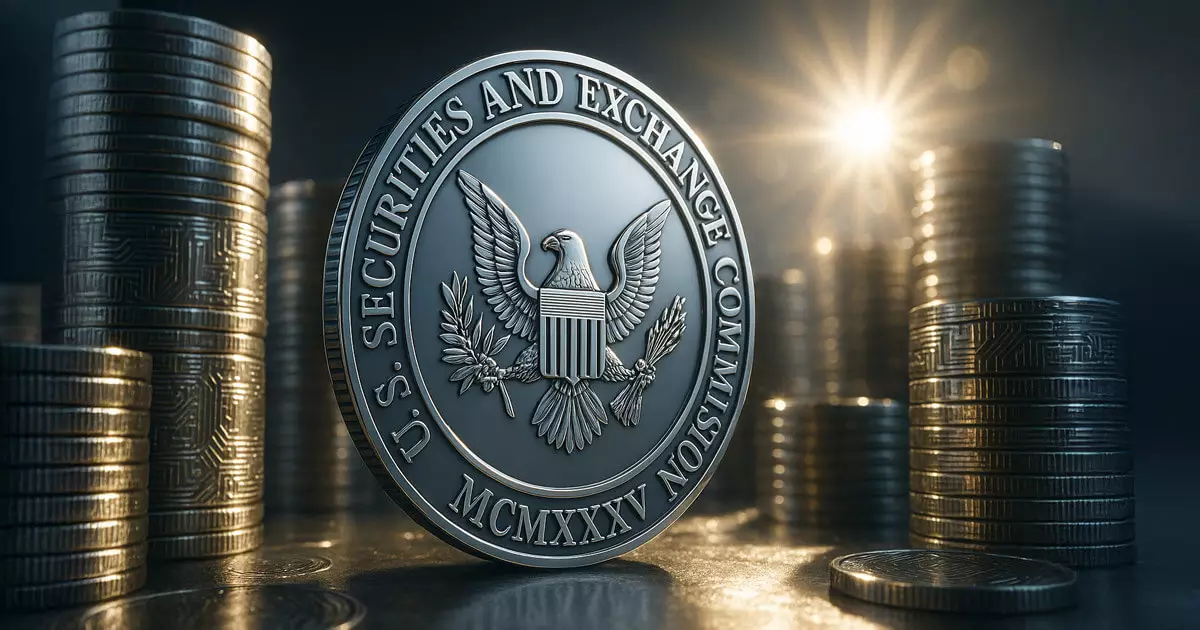The U.S. Securities and Exchange Commission (SEC) has recently carved out a new narrative regarding crypto staking, declaring that specific forms do not require registration as securities. This revelation, announced by the SEC’s Division of Corporation Finance, seemingly provides a breath of fresh air for enthusiasts and investors in decentralized finance (DeFi) systems. However, at the heart of this emerging regulatory landscape lies a confluence of excitement and skepticism that demands scrutiny.
While the SEC’s proclamation intends to legitimize staking activities by asserting that operations like self-staking, delegated staking, and custodial services remain outside the realm of securities laws, one must pause to consider the broader implications. Are we truly stepping into an era of crypto acceptance, or are we witnessing a half-hearted attempt to grapple with an incomprehensible landscape? The answer is complicated, especially given the SEC’s checkered history with crypto regulation.
Deciphering Complexity: Staking and Regulatory Uncertainty
Staking is a fundamental mechanism for proof-of-stake blockchain networks. Participants secure their assets to validate transactions and earn rewards. It’s a process that appears simple but encapsulates a myriad of complexities. The SEC’s guidance clarifies that enhancements—such as slashing protection and minimum staking thresholds—do not transform these activities into securities offerings, ostensibly easing a burden for participants. Yet, this does not address the underlying ambiguity that surrounds the regulatory interpretation of staking.
The differences in opinion within the SEC itself signal concern. While Commissioner Hester Peirce celebrates this as a much-needed initiative that recognizes the technological evolution of crypto, her colleague, Caroline Crenshaw, expresses unease about what she perceives as a departure from established legal standards like the Howey Test. This internal disagreement highlights the ambiguity of the SEC’s position, effectively portraying the agency as a ship adrift in a stormy sea of technological advancement.
The stakes are considerably high. The guidance could pave the way for asset management firms looking to capitalize on staking rewards through Ethereum exchange-traded funds (ETFs), but this potential gain is dampened by the reality that regulatory clarity is still necessary. Given that the regulatory landscape changes rapidly, one must question whether the SEC is genuinely laying groundwork or merely brushing issues beneath the rug.
Navigating the Slippery Slope of Financial Innovation
As we move forward, the crypto community is left in a precarious position, balancing the promise of staking rewards against the shadow of regulatory scrutiny. Lawmakers and regulators must find a way to accommodate innovation while upholding legal principles meant to protect investors. The conflict surrounding crypto regulations is emblematic of a larger struggle to reconcile traditional financial systems with digital advancements—a task that continues to frustrate developers, investors, and regulators alike.
In this dynamic environment, the criticism of the SEC’s “fake it till you make it” approach from Crenshaw resonates profoundly. It’s not enough to infer that participants are shielded from securities laws without a concrete legal framework that precisely defines their rights and obligations. Being caught in this whirlwind of changing regulatory stances could stymie the development of vital infrastructure that blockchain technology desperately needs.
At this juncture, it’s crucial for both stakeholders and regulators to pause and reconsider their strategies. Businesses need to safeguard their innovations from the repercussions of regulatory ambiguity, not just for their sake but for the future potential of a burgeoning industry that promises to redefine finance.
The Road Ahead: Will Crypto Flourish or Flounder?
As momentum for Ethereum-based ETFs mounts, boasting impressive inflows and interest—totaling over $480 million in just nine days—the prospect of capital gained from efficient staking mechanisms becomes all the more enticing. However, the looming question still remains: can the benefits of staking materialize under the current regulatory framework?
The SEC’s latest move does offer a glimmer of hope, but it remains to be seen whether this regulatory paradigm shift will be enough to foster an environment where innovation can thrive. Every advancement comes with caveats and nuances that must be navigated carefully. Investors and industry players alike are left grappling with the implications, aware that both opportunity and vulnerability coexist in this brave new world of blockchain finance.
In the end, what is certain is that those who wish to partake in the future of finance must be prepared for a long and winding road filled with regulatory hoops, personal challenges, and severe risks.

